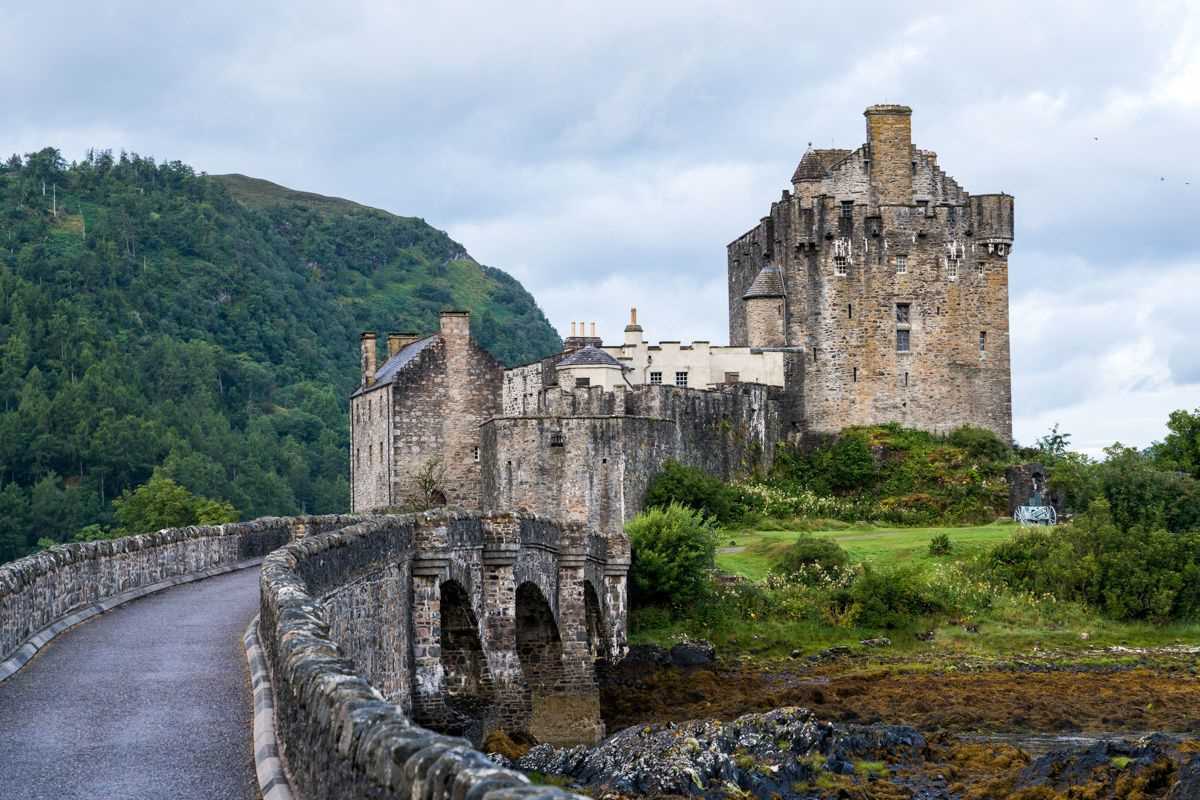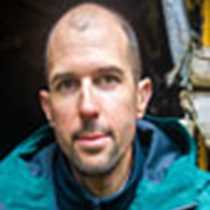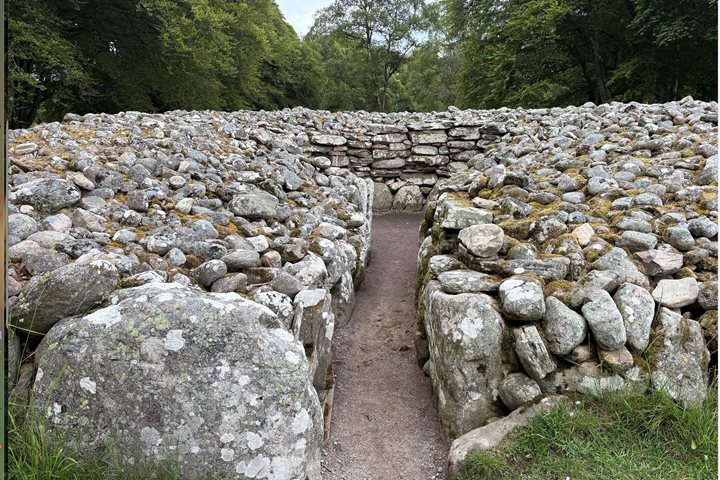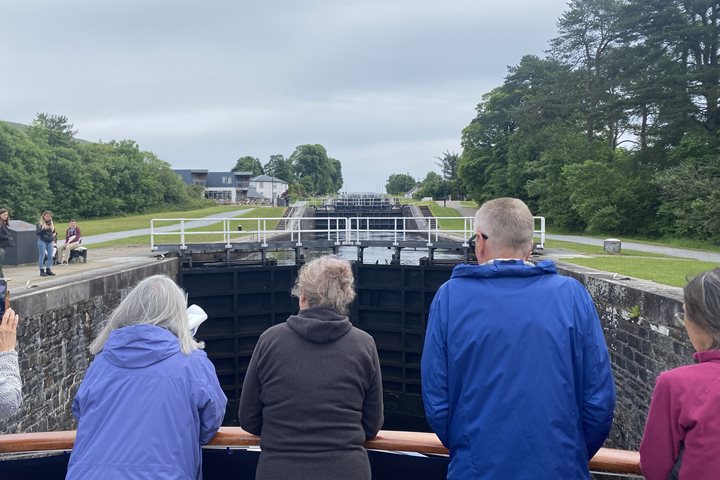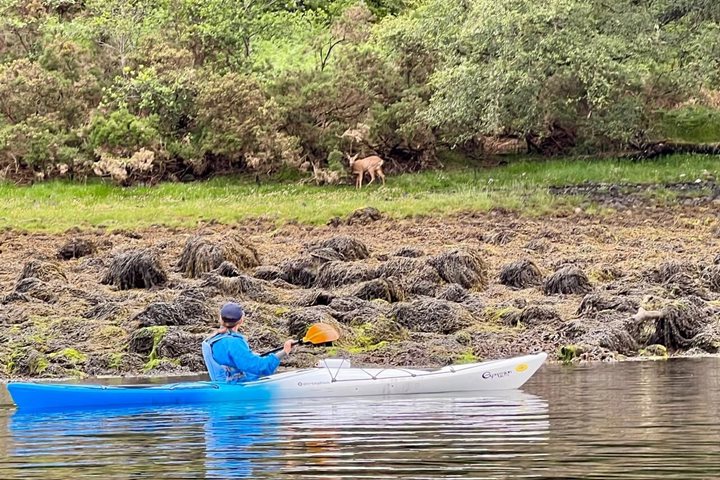Light and shade danced across the narrows, dotted with islands, between the Isle of Skye and Kyle of Lochalsh this morning. The elegant Skye bridge framed our view from the ship. We were off to explore one of the land’s most iconic castles, Eilean Donan.
A stronghold has stood on this tidal islet since ancient times, and the present edifice was probably built in the early 13th century as a royal bulwark against the Norsemen—Viking settlers who had taken over nearby Skye and all the islands to the north and west. The castle was destroyed in 1719, after it was blown up with gunpowder to prevent it falling into rebel hands, and it remained in ruins for 200 years. In the early 20th century, it was lovingly restored to its full glory.
Our next stop was the village of Plockton, a photographer’s paradise of charming seaside cottages and tiny colorful gardens on the tranquil banks of Loch Carron. Hikers walked over the nearby Skye bridge to the foothills of the Red Cuillin Mountains. A stone bridge over the waters of Allt Dearg Mor opened onto a moorland trail leading up over peat and rock to spectacular vistas of the mountains beyond. We spotted a stonechat, and heard its distinctive call, and we saw extensive patches of sundew, a carnivorous, insect-eating plant.
Back on the ship, the wind picked up, and our transit through the Sound of Sleat was rather lively. The grounds of Armadale Castle on the Sleat Peninsula were sheltered, however, and we explored the sprawling gardens that featured exotic specimens such as monkey puzzle trees and gunnera from South America. Then we visited the ruins of a grand mansion that had been the seat of the MacDonalds of Sleat in the 17th century.
Lord of the Glens made her way westward to Loch Nevis and the isolated village of Inverie. Famous for having the mainland’s most remote pub, the Old Forge Inn, the village of Inverie is notable for its lack of road access—it can be reached only on foot or by sea.

